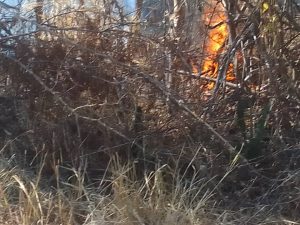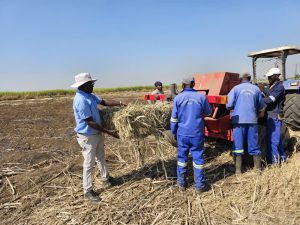Moses Ziyambi
What is climate change?
It is the shift in long term average weather conditions for a given geographical area.
Climate change and climate variability
Zimbabwe’s climate has never been consistent each year and each season. There have always been fluctuations through-out the years, and it is a fact that some wet seasons are wetter than others, while some years are generally colder than others. There should therefore not be a confusion between climate change and climate variability.
Weather and climate
Weather is the state of atmospheric conditions at a particular place and time as characterized by such factors as temperature, rainfall, humidity, wind and cloud cover. Climate can be defined as the long-term average conditions for an area over a period spanning at least 30 years.
Zimbabwe’s climate
Practically, the country’s climate can be put into three categories of seasons; hot and wet (November – March), cold and dry (May – July), hot and dry (August – October). Conditions of the month of April often tend to be in between, representing a transition from the hot and wet season into the cold and dry season. Since year 2000, Zimbabwe has experienced good average rainfall, various tropical storms and cyclones, as well as many droughts with alternating frequency. Some of the cyclones or tropical storms experienced over the past 22 years are Eline (2000), Japhet (2003), Deneo (2017), Idai (2019), Chalane (2020) Ana (2021) and Eloise (2022). Recent droughts were experienced in the farming seasons of 2002-2003, 2007-2008, 2012-2013, 2015-2016 and 2018-2019. It is important to note that the flooding and the drought conditions did not affect the entirety of the country uniformly as some areas were severely affected while others were moderately affected. A few places were not at all affected directly.
Main causes of climate change
Toxic gases or greenhouses that get released into the atmosphere mainly by industrial plants, mining activities, moving vehicles, as well as by the burning of coal and firewood. These gases prevent heat from leaving the atmosphere, causing global warming. These gases include carbon dioxide, nitrous oxide and methane. It is important to point out that causes of climate change are not necessarily localized; transgressions committed in any part of the world affects the rest of the world. Whatever effects of climate change felt in Zimbabwe today are not necessarily a direct result of greenhouses released solely by Zimbabwe. With climate change, the world is indeed a global village.
Most vulnerable places in Zimbabwe
Areas that have traditionally received the lowest amount of rainfall (the Matabeleland provinces, Chiredzi, Mwenezi, parts of Chipinge and some areas along the Zambezi River), and those that have always received the highest average amounts of rainfall (Chimanimani, Nyanga, Vhumba), are considered the most vulnerable to climate change. As time goes, rains will be lower for the first group and this entails increased frequency of droughts. It is projected that Botswana’s Kalahari Desert will expand eastwards into Zimbabwe. The second group will see more and severer floods. The Eastern Highlands will become as vulnerable to flooding as much of Mozambique.
Adaptive solutions at local level
People in dryer areas should be supported to transition to irrigation-fed agriculture and they must grow traditional grains (mapfunde, mhunga and rukweza) which are more drought-tolerant. Those in wetter areas should build homesteads on higher ground and should be supported to explore rice as a new crop. Fruit farming too tends to be easier in places with higher rainfall. Generally, people should stop deforestation and plant more trees instead. Stream bank cultivation must stop and so must the building of homes on wetlands.
Special thanks to Anna Brazier’s book Climate Change in Zimbabwe






